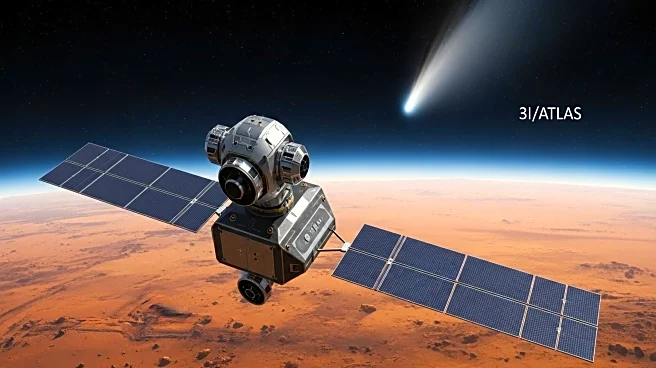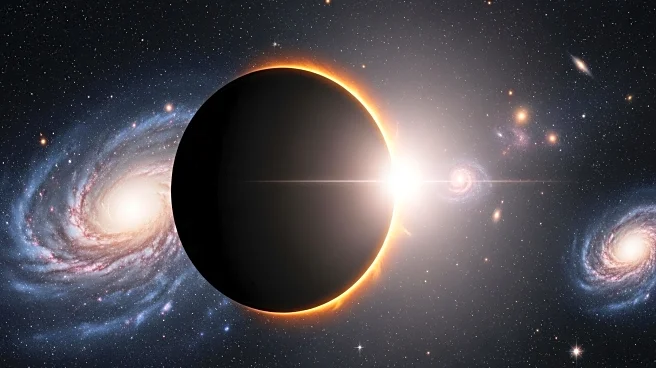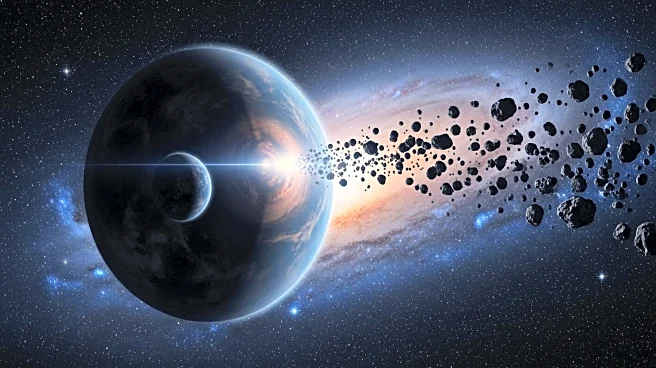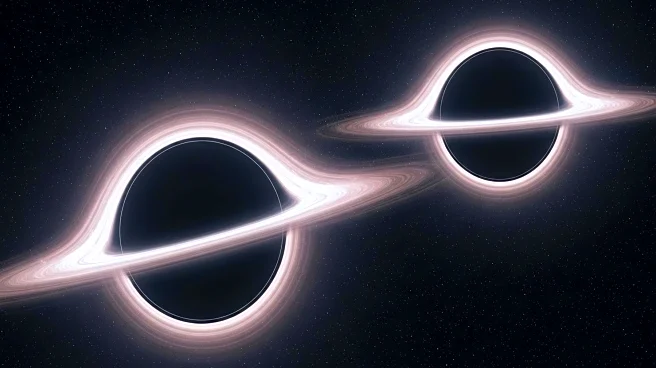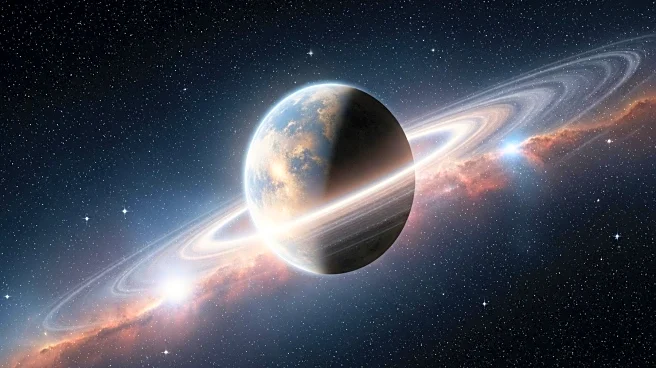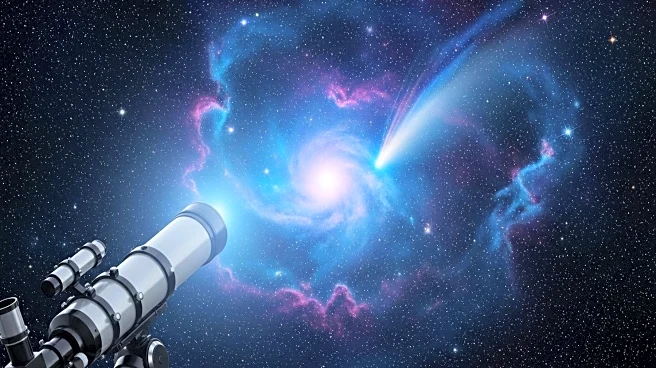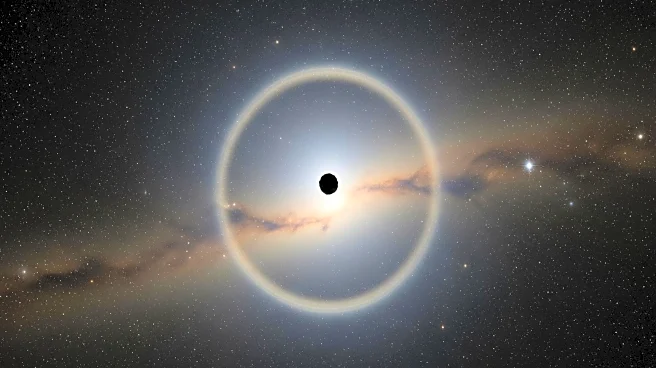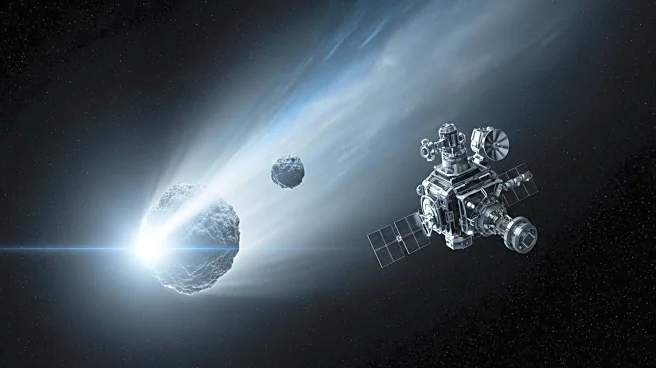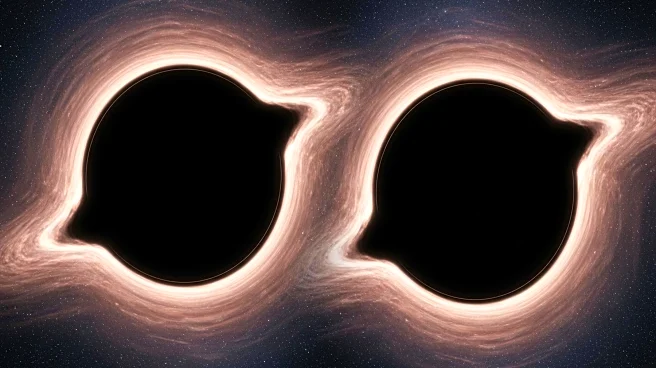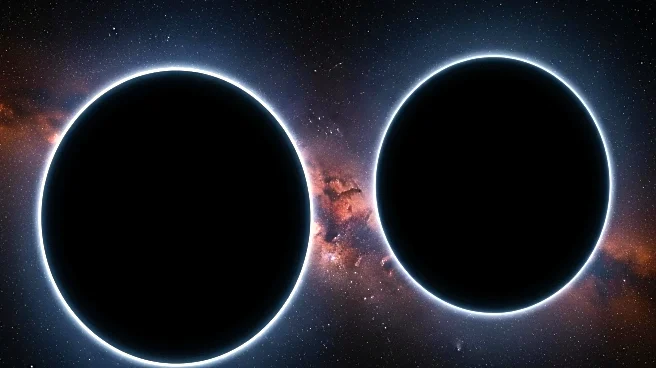What's Happening?
A team of researchers has utilized the GRAVITY+ instrument on the European Southern Observatory's Very Large Telescope Interferometer to reassess the mass of J0529, the brightest known quasar in the Universe. This new study has revealed that the mass of the supermassive black hole at the center of J0529 is 10 times smaller than previously estimated. Initially thought to be 10 billion solar masses, the revised mass is now calculated to be 800 million times the mass of the Sun. The discrepancy arose from the original assumption that the broad emission lines observed were due to high orbital speeds of the accretion disc, rather than outflows of gas. The GRAVITY+ instrument allowed researchers to directly observe the Broad Line Region and identify a massive jet of gas moving at 10,000 km/s, which influenced the spectral line measurements.
Why It's Important?
This discovery has significant implications for our understanding of black hole growth and the early Universe. The revised mass of J0529 challenges previous assumptions about the size and growth rate of supermassive black holes shortly after the Big Bang. The findings suggest that black holes can grow past their Eddington limit temporarily, affecting their long-term size and the formation of galaxies. The jets from these black holes can halt star formation and disperse material across galaxies, impacting cosmic evolution. This study underscores the importance of technological advancements in telescopes, which enable more accurate measurements and can lead to a reevaluation of established scientific theories.
What's Next?
As telescope technology continues to advance, researchers anticipate gaining even more detailed insights into distant galaxies and black holes. Future observations may further refine our understanding of cosmic phenomena and the role of supermassive black holes in galaxy formation. The ongoing cycle of technological progress and scientific discovery promises to challenge existing assumptions and expand our knowledge of the Universe.
Beyond the Headlines
The study of J0529 highlights the complex interplay between black hole growth and galaxy evolution. The ability of black holes to exceed their Eddington limit and the resulting outflows have profound effects on their host galaxies. These jets can influence star formation rates and the distribution of cosmic material, potentially altering the structure and development of galaxies over time. This research contributes to a broader understanding of the dynamic processes shaping the Universe.

